Fertile ground for innovation Manitoba is budding into a research hub exploring agriculture’s digital future
Read this article for free:
or
Already have an account? Log in here »
To continue reading, please subscribe:
Monthly Digital Subscription
$0 for the first 4 weeks*
- Enjoy unlimited reading on winnipegfreepress.com
- Read the E-Edition, our digital replica newspaper
- Access News Break, our award-winning app
- Play interactive puzzles
*No charge for 4 weeks then price increases to the regular rate of $19.00 plus GST every four weeks. Offer available to new and qualified returning subscribers only. Cancel any time.
Monthly Digital Subscription
$4.75/week*
- Enjoy unlimited reading on winnipegfreepress.com
- Read the E-Edition, our digital replica newspaper
- Access News Break, our award-winning app
- Play interactive puzzles
*Billed as $19 plus GST every four weeks. Cancel any time.
To continue reading, please subscribe:
Add Free Press access to your Brandon Sun subscription for only an additional
$1 for the first 4 weeks*
*Your next subscription payment will increase by $1.00 and you will be charged $16.99 plus GST for four weeks. After four weeks, your payment will increase to $23.99 plus GST every four weeks.
Read unlimited articles for free today:
or
Already have an account? Log in here »
Hey there, time traveller!
This article was published 20/09/2024 (441 days ago), so information in it may no longer be current.
Nelson Plett spent hours searching, riding his horse through thick brush, winding past poplar trees and willows, eyes peeled for two stray bulls.
The air hadn’t yet turned cold, but the days were getting shorter. Plett considered his options: continue scouring his 6,400-acre farm on horseback and hope to happen upon the animals, or try out a new toy — his drone.
He drew his steed back to the farmyard and prepped his mapping drone — one that features four cameras and weighs just a few pounds — for flight.
NIC ADAM / FREE PRESS Agriculture student Tanner West gives a demonstration on drone use for various farming implements.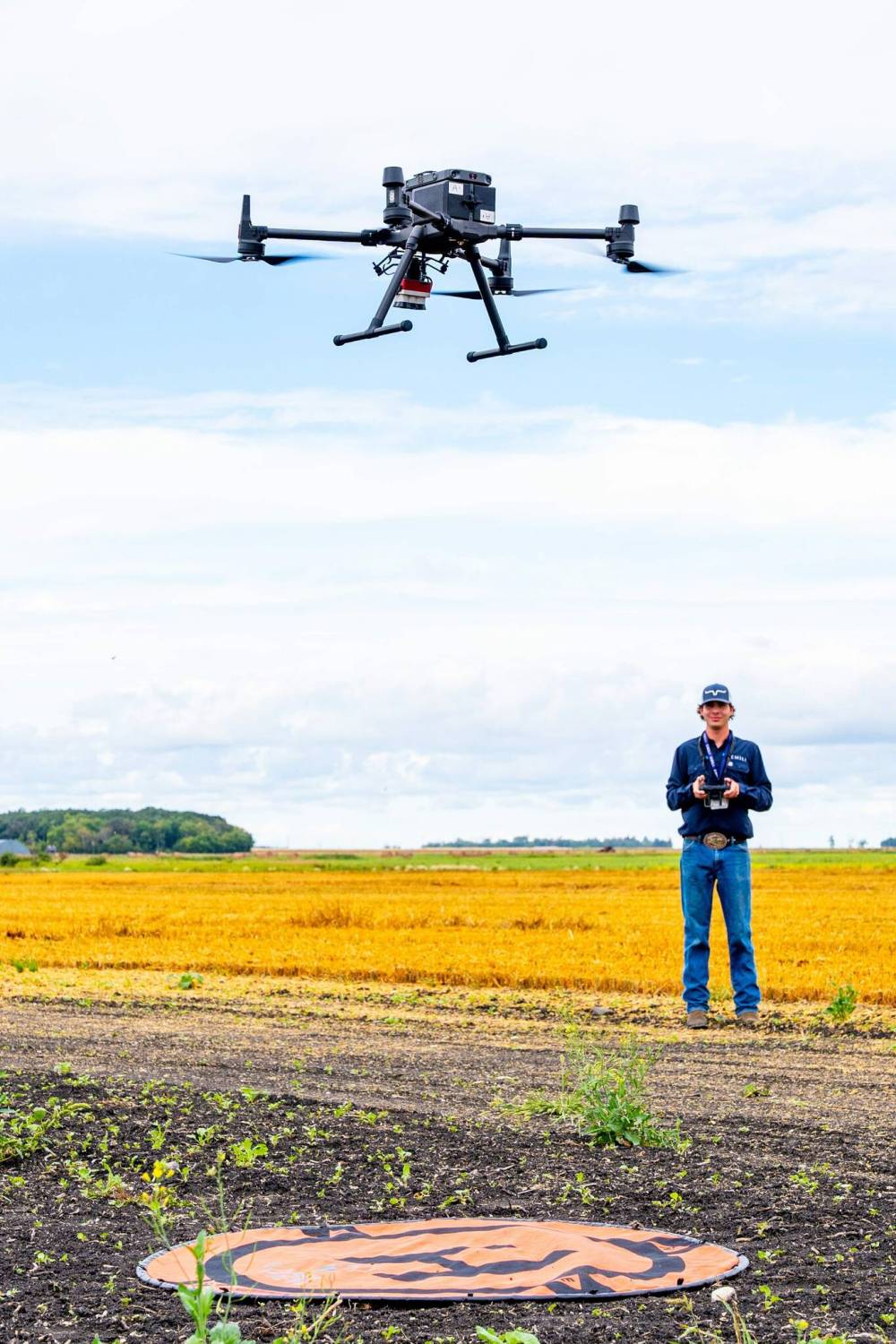
A majority of the farmland, located west of Lake Manitoba in the RM of Alonsa, is covered by thick brush and is difficult to access.
Yet within an hour of drone surveillance, Plett had found his wayward bulls.
“At times, drones are more practical,” he said.
Plett still “far prefers” riding horseback — and it remains necessary for him when it comes to reaching sick animals, among other tasks — but he’s mindful of the constantly evolving presence of digital agriculture.
Artificial intelligence, robotics and high-tech surveillance are becoming increasingly integrated in farming practices, and Manitoba has become a research hub, developing a 5,500-acre commercial seed farm dedicated to testing new products.
Post-secondary schools, private enterprise and producers alike are embracing tech advancements in the province’s agriculture and agri-food industry. The sector’s exports netted international sales of $9.39 billion last year; stakeholders hope emerging technology will create further efficiencies and help keep more money in farmers’ pockets.
By 2021, 56 per cent of Manitoba farms were employing some form of digital-agriculture technology, according to the Canadian census of agriculture.
“Change is coming,” Plett said.
Plett, 49, is among the early adopters. The beef farmer is a dealer for agricultural drones, plus he has two of his own.
The mapping drone he used to locate the bulls has also been handy for identifying diseased crops utilizing near-infrared footage. Healthy crops appear in one colour, sick crops in another.
The DJI Mavic 3 Multispectral drone, as it’s called, also maps elevations and obstacles, like trees, throughout fields.
Such a drone costs around $10,000, Plett said. His much bigger spray drone — a DJI Agras T40 — sells for about $40,000.
“I never thought we’d see the day that we’d be using drones in farming. Sometimes it’s mind-boggling.”–Milt Olfert
The latter weighs about 80 pounds and can spread fertilizer (at a rate of 1.5 tonnes per hour) and seed. He’s used it to spray corn with micronutrients when the crop was too tall for his regular sprayer.
Milt Olfert is also a drone convert. On one occasion last year, when his land was too wet for heavy equipment, he turned to his drone to seed 250 acres of canola. It’s a simple process: He inputs seed, sets parameters on an app and directs it to start its mission; once its power source runs low, it returns for a battery change.
“I never thought we’d see the day that we’d be using drones in farming. Sometimes it’s mind-boggling,” said Olfert, 54, who sells drones and also farms 600 acres — corn, soy, wheat and canola — between Winkler and Morden.
He stresses the fact an aerial invasion isn’t about to take over the world of agriculture. Instead, drones are a “tool in the toolbox,” often costing less and working faster than typical farming practices.
Drones have piqued interest among producers, though purchases haven’t necessarily followed. A boom will come, Olfert expects, if Canada approves pesticide application by drones.
Canada lags behind the United States, Japan and Ukraine, among other countries, who have approved pesticide spraying by drone. Some Manitoba farmers are “not necessarily waiting for all the regulatory procedures to be out of the way,” Plett noted.
Health Canada has approved drone application of three biopesticides for mosquito control and a herbicide for use in non-crop settings, such as around power lines. But more data is needed before pesticide approvals come, Health Canada spokeswoman Marie-Pier Burelle said.
“Drones are expected to behave differently than traditional aircraft as a result of their design,” Burelle wrote in a statement, noting there are several ongoing initiatives that could result in pesticide-application approvals.
Transport Canada has issued 4,291 drone pilot certificates and registered 3,199 drones in Manitoba, however it doesn’t track how many devices are used for agricultural purposes.
In 2021, 4.9 per cent of Manitoba farms reported using drones, Statistics Canada found.
JOHN WOODS / FREE PRESS Greg Stewart is the founder of Geco Strategic Weed Management, a firm that uses data and AI to predict weed growth, allowing for more targeted applications.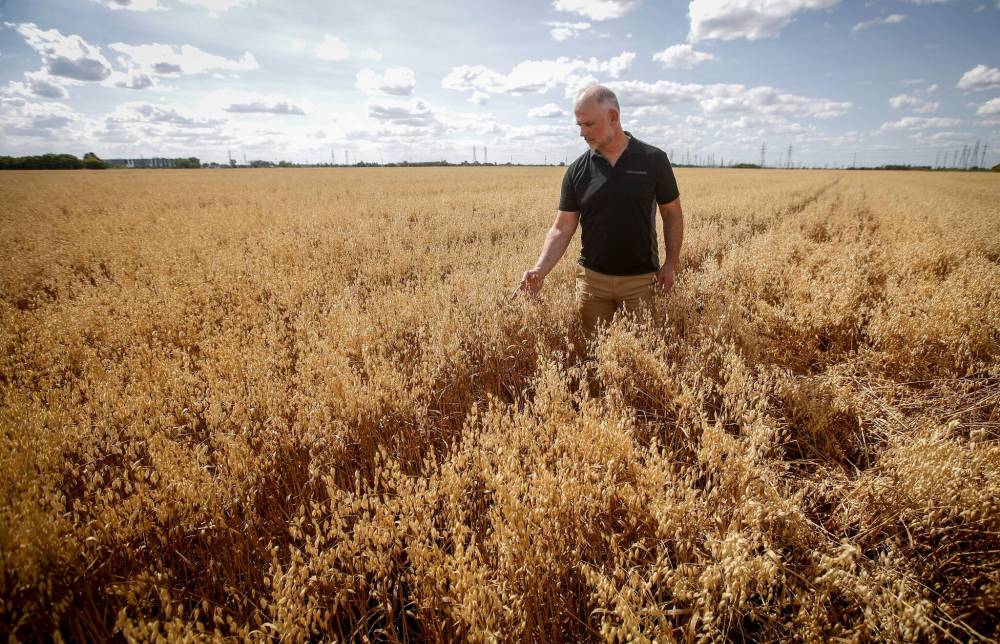
Leanne Koroscil is a certified drone pilot and manager of Innovation Farms in Grosse Isle. Last month, at Innovation Farms’ 5,500-acre site, she showcased several new technological farming advances for producers and stakeholders.
“(Farming) looks totally different than what we experienced… in previous generations,” Koroscil told the group.
One crop sensor on display featured a 360-degree rotating head that could scan approximately seven acres. It tracks and measures varying characteristics, such as height, flowering and soil conditions.
NIC ADAM / FREE PRESS Emili Innovation Farms manager Leanne Koroscil gives a presentation on various sensors designed to show farmers how their fields are doing remotely at Innovation Farms.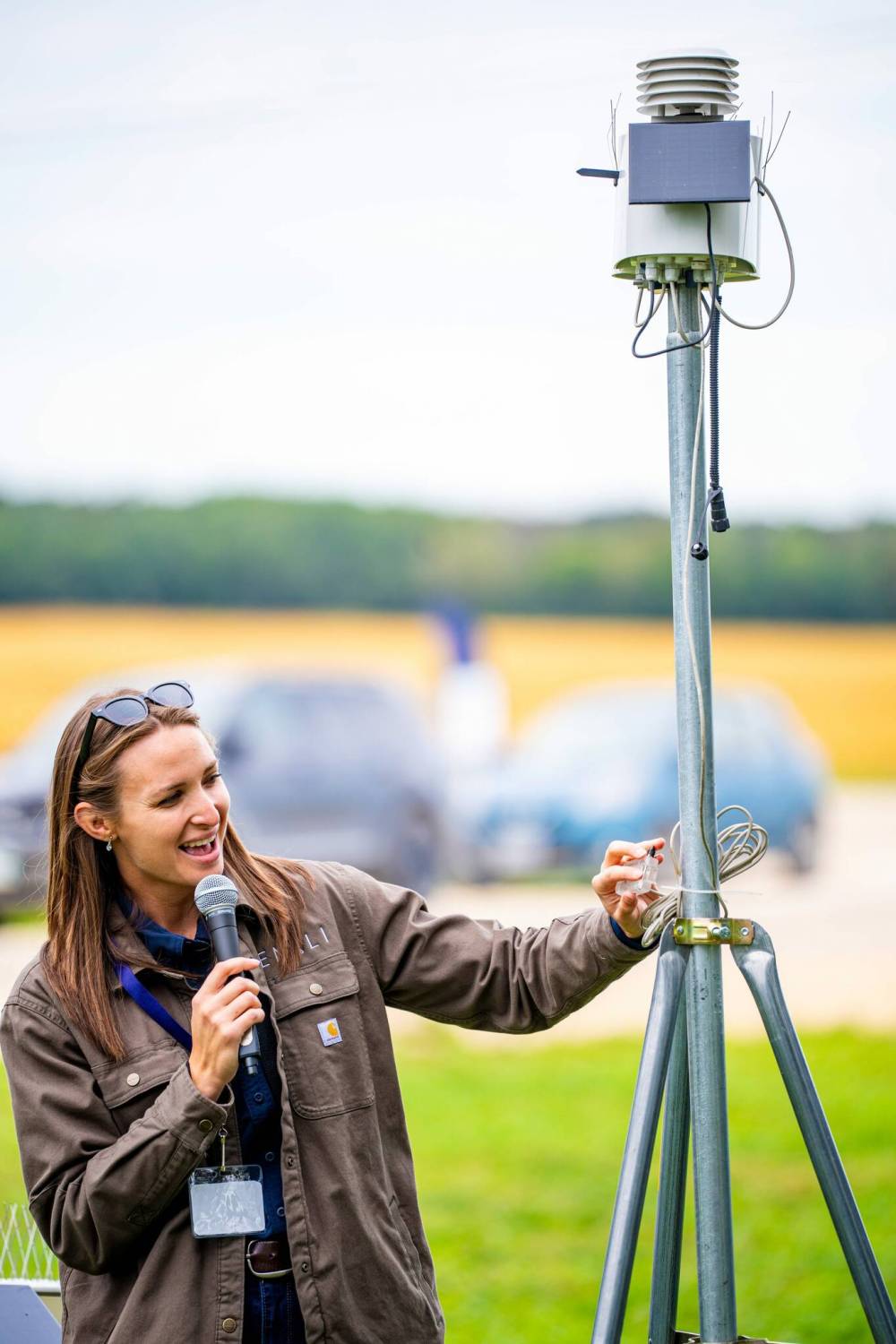
The Crop Sentry Solution device, created by Agi3, gathers information from high-density, multi-sensor imaging and 3D scanning. Agi3 uses the data, along with AI, for further crop monitoring and yield prediction.
Fifteen of the sensors are currently being tested at Innovation Farms. Staff members with the Enterprise Machine Intelligence and Learning Initiative (EMILI), the AI non-profit behind Innovation Farms, regularly check the fields to confirm the sensors’ data is accurate.
A similar scene unfolded last summer when Greg Stewart was assessing technology for his startup, Geco Strategic Weed Management.
Geco uses farm data and satellite imagery to predict where weeds will appear. AI underpins its program. The goal is to reduce herbicide use and make it more targeted, Stewart said.
He partnered with EMILI to ensure Geco’s findings aligned with human observations and drone footage. Geco has also received a grant from EMILI.
Improving technology is a “forever goal,” Stewart said, noting Geco is constantly upgrading its algorithm as it works with new clients.
His Vancouver-based company has rapidly expanded since its Manitoba trials. Prior to working with Innovation Farms, Geco was operating on three fields. It now covers at least 95 farms across Western Canada and in parts of the American Midwest, a total area of about 20,000 acres. It touts a 90 per cent hit rate on weeds.
“All of the technologies we’re developing are really getting at how best to keep your weeds down and your crop yields up,” Stewart said. “I think the more we can understand those things… it changes the game altogether.”
Innovation Farms runs trials on Rutherford Farms, a multi-generation seed-producing operation. Rick Rutherford has partnered with EMILI to put new technological capabilities to the test on his commercial farm, essentially “from the combine to the grain bin.”
His family has been tech-focused for decades, he said, noting they have closely tracked farm data over the last 12 years, which companies at Innovation Farms can access.
NIC ADAM / FREE PRESS Rick Rutherford has partnered with EMILI to put new technological capabilities to the test on his commercial farm.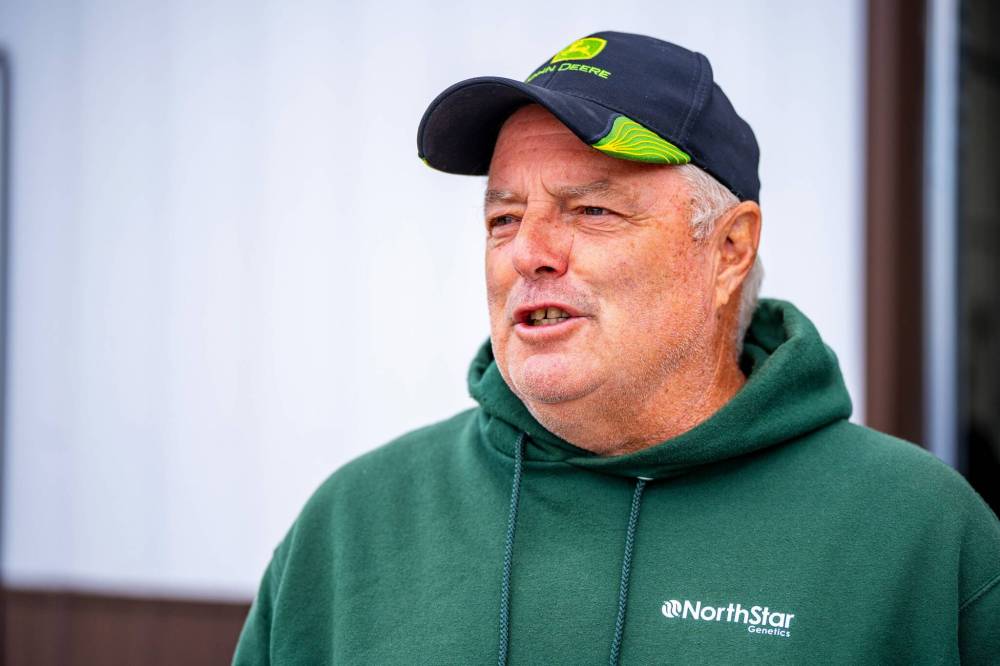
This harvest, Rutherford is overseeing vehicles that autonomously turn at the end of field rows.
“Technology is great, but… if you can’t prove it on a commercial farm, it doesn’t have a lot of viability,” Rutherford said.
“Technology is great, but… if you can’t prove it on a commercial farm, it doesn’t have a lot of viability.”–Rick Rutherford, owner of Rutherford Farms
EMILI received a $2.025-million boost from the federal and provincial governments this summer. At a news conference, Premier Wab Kinew said farmers have been “loud and clear” that they can’t afford to risk their operations on unproven technology.
Building new agriculture-specific tech will support Manitoba farmers and their American trading partners, Kinew said.
EMILI had previously received $8.5 million from government and private-sector sources, to be used over five years.
NIC ADAM / FREE PRESS EMILI’s stakeholder engagement manager Kyle Hiebert says more needs to done to assist startups.
More must be done to assist startups, including those in digital agriculture, said Kyle Hiebert, EMILI’s manager of public policy and stakeholder engagement.
“Manitoba’s pipeline to go from a startup to being a high-growth company… some of those supports just don’t really exist in the capacity they need to,” Hiebert said.
He’d like a 10 per cent increase to the Manitoba First Fund, a $100-million provincially created venture-capital fund for local growth-minded businesses to access funding. Expanding the Manitoba Export Development Program — to accept companies earning lower revenues — would be helpful, Hiebert said.
Agriculture Minister Ron Kostyshyn called funding for ag-tech ventures an “open discussion.”
“There are never any closed doors. We’re willing to work with anybody (who will add value to food production), as far as their innovative ideas, because we value the importance of agriculture.”
More tech doesn’t mean fewer farm jobs. Instead, it will broaden the career spectrum as there will be a need for drone pilots, computer scientists, data analysts and mechanical engineers, Koroscil said.
Technology, she predicts, could help offset an anticipated labour gap in the industry.
In a 2023 report, RBC predicted a shortfall of 24,000 general farm, nursery and greenhouse workers across Canada by 2033.
Sowing seeds for farming’s future
The University of Manitoba has hired eight faculty members over the past four years in response to the growing appetite for digital agriculture.
The new recruits span areas of soil science, animal science, plant science, agri-business and biosystems engineering, said Nazim Cicek, associate dean (research) of the university’s agricultural and food sciences faculty.
The University of Manitoba has hired eight faculty members over the past four years in response to the growing appetite for digital agriculture.
The new recruits span areas of soil science, animal science, plant science, agri-business and biosystems engineering, said Nazim Cicek, associate dean (research) of the university’s agricultural and food sciences faculty.
“It’s a quick-moving area, and we’re trying to respond as best as possible,” Cicek said.
There’s wide-ranging interest in digital agriculture among students — whether they’re from rural, urban or international backgrounds. Meantime, post-secondary researchers are diving in head-first and using drones to distinguish between weeds and crops of interest, working on autonomous vehicles and applying sensors to check animal welfare on farms.
“I don’t feel the pace (of technology) is going to slow down,” Cicek said. “Add to that the power of AI — machine learning will be really instrumental in making better decisions.”
Meanwhile, Brandon-based Assiniboine College’s Prairie Innovation Centre has added courses on digital-agriculture technology and mechatronics, which is a multi-disciplinary engineering field involving robotics, automation and control systems, and more technology-focused courses are coming, said chair Kevin Rogers.
“Farmers are very smart people. They understand that a little investment in technology is going to have big rewards for them in yields,” Rogers said.
Factor in hard-to-find labour — and more expensive labour, at that — and technology will continue to be relied upon, Rogers predicted.
Currently, an Assiniboine College professor is seeking funding to train a robot to pick fruit. College researchers are developing a “greenhouse in a box” that will run sustainably on its own for a year, utilizing solar panels and walls designed to retain heat. The goal is to create a transportable, off-grid unit.
“If you have a remote area, you could have fresh fruit in the middle of winter,” Rogers said.
Researchers at Red River College Polytechnic have created a vertical hydroponic system, meaning leafy green vegetables could grow in a controlled environment without soil.
The post-secondary institution routinely works with industry partners on the challenges they face, and has recently been leaning into AI, said Janfizza Bukhari, director of RRC Polytech’s Technology Access Centre for Aerospace and Manufacturing.
“It’s very hard to find employees,” said Melissa Atchison, a cattle farmer based in southwestern Manitoba, near Pipestone. “The cattle business isn’t for everyone.”
Atchison doesn’t expect automation to fully consume the sector, but the technological advances have been significant. What began as tracking cows with paper and pen has progressed to radio-frequency identification tags.
Genetic testing and data collection have also made decisions regarding breeding, feed distribution and antibiotics easier, said Atchison, who is the Manitoba Beef Producers’ research and extension specialist.
“Inputs are quite expensive. Efficiency is definitely key,” she said. “We want to make sure we are using our resources… in the most efficient way possible.”
Even the traditional barbed-wire fence is being reconsidered. Virtual fencing, which is already being used in the U.S. and Norway, is being studied by the Manitoba Beef and Forage Initiatives in Brandon and elsewhere in Canada. The technology involves producers fitting their cows with GPS-integrated collars and establishing a perimeter for their herd. The collars emit a sound when the animals near the boundary, and cows will be trained to turn around. Vence, an American-based company, says a herd can be trained in four to five days to respond to the sound cue.
“It’s kind of a neat way to work with nature,” Atchison said.
The emerging product can also facilitate open wildlife corridors, she added. While the technology is currently “cost prohibitive,” Atchison said she believes prices will decrease as popularity grows.
Pork production is big business, and for Manitoba companies such as HyLife, that means scouring the globe for emerging technology. Its research-and-development team is planning a trip to Asia, said Lyle Loewen, the company’s senior vice-president of farms.
“We need to stay on the cutting edge,” said Loewen, citing improved efficiency and animal welfare, reduced costs and remaining globally competitive as reasons for prioritizing technology.
The company employs more than 2,500 people around the world and operates its own research farm. HyLife is headquartered in Steinbach, though a majority of its goods are marketed overseas.
SUPPLIED High-tech devices like sow-feeding equipment help Steinbach-based firm HyLife stay competitive globally. 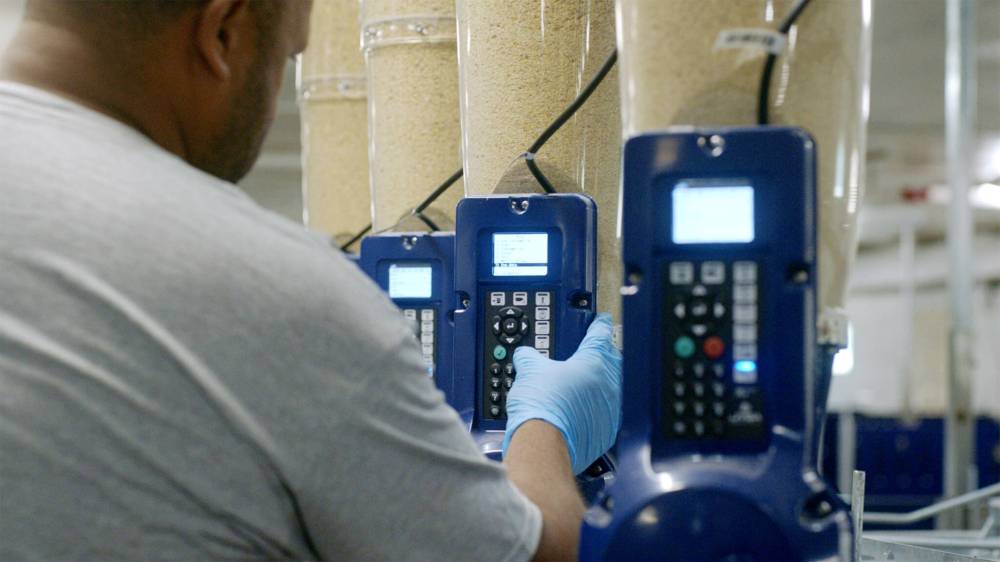
HyLife has implemented geofencing on its farms across Western Canada, which alerts staff any time a visitor enters onto a property. About 40 per cent of HyLife’s farms also enlist electronic sow feeding, where feeders recognize sows’ tags as they approach to eat, and an individualized amount of food is dispensed. A handful of farms also employ electronic monitoring, where sensors alert staff when feed bins are depleted.
HyLife is currently testing robots for the task of cleaning its barns. Picture a robot on four wheels with a high-pressure washing arm cleaning “every square inch of floor, every square inch of wall, everything in the room.”
“At the end of the day, the robotic washer probably does 90 or 95 per cent of the job,” Loewen said. “We still have to go in after it.”
Incorporating technology also serves to attract young talent, he said.
“The younger generations coming up, they’re much more comfortable with… and actually want to work with technology,” Loewen said. “This technology helps us move away from the manual tasks. That actually helps us attract that next generation of workers.”
AI isn’t a novelty on Manitoba farms.
Winnipeg-based digital-agriculture company Farmers Edge has been using AI for several years to predict yields and virtually test soil.
Amit Pradhan, executive vice-president of strategy at Farmers Edge, has been busy shifting the company’s customer base as it seeks to attract more corporate clients and to share information on fields and post-harvest analyses, among other things.
“Most of these agri-businesses, they’re not software companies,” Pradhan said, noting there seems to be a push at the enterprise level “given the need for data transparency and high level of productivity.”
Nutrien Ag Solutions, one of the world’s largest fertilizer companies, offers precision agriculture applications — like planning and soil mapping — that aim to get granular with its farm customers.
Enjoy Creative An aerial view of Innovation Farms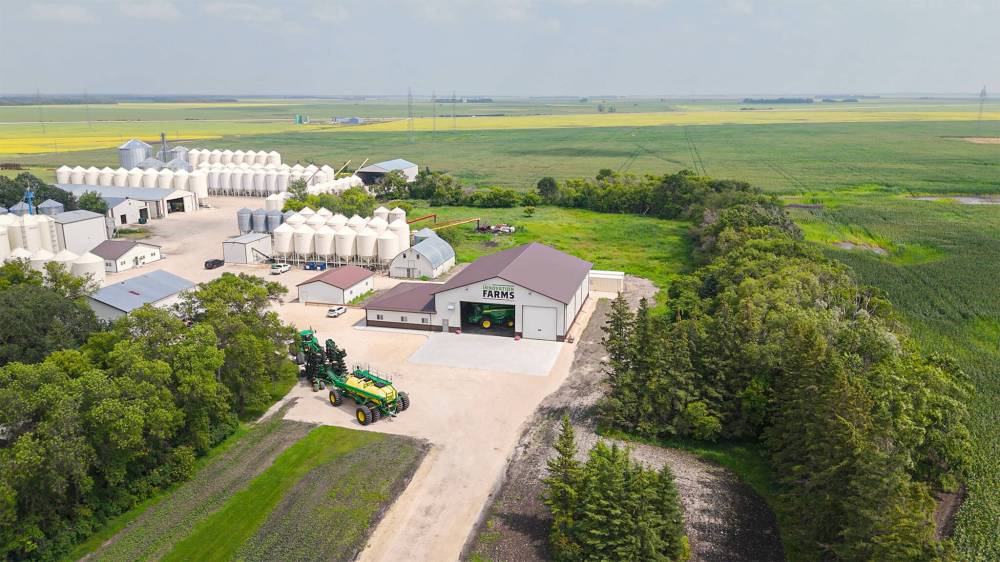
“We want to look at the smallest level possible and manage the environment the best we can to maximize that return,” said Matt Fagnou, one of Nutrien’s senior managers of precision agronomy. “That’s how technology is really starting to improve for us.”
Nutrien utilizes customers’ soil samples, past yield data, public weather information and satellite data — anything helpful to understand the land.
Farmers can then apply “the right amount of fertilizer in the right places… so we maximize every dollar that goes in,” Fagnou said, noting it’s better for the environment.
Technology is also helping to clarify, through new models, how nutrients are being used. It’s assisting in the modification of plant genetics so crops can absorb nutrients more easily and adapt to a changing climate, Fagnou added.
“We’re controlling everything,” he said. “The amount of seed that’s going down in the field in certain areas is changing, the fertility is changing.
“The idea isn’t always about increasing yield — it’s about maximizing what (we) utilize in the field. It’s about limiting losses.”
gabrielle.piche@winnipegfreepress.com

Gabrielle Piché reports on business for the Free Press. She interned at the Free Press and worked for its sister outlet, Canstar Community News, before entering the business beat in 2021. Read more about Gabrielle.
Every piece of reporting Gabrielle produces is reviewed by an editing team before it is posted online or published in print — part of the Free Press‘s tradition, since 1872, of producing reliable independent journalism. Read more about Free Press’s history and mandate, and learn how our newsroom operates.
Our newsroom depends on a growing audience of readers to power our journalism. If you are not a paid reader, please consider becoming a subscriber.
Our newsroom depends on its audience of readers to power our journalism. Thank you for your support.
History
Updated on Tuesday, September 24, 2024 9:14 AM CDT: Corrects wording

